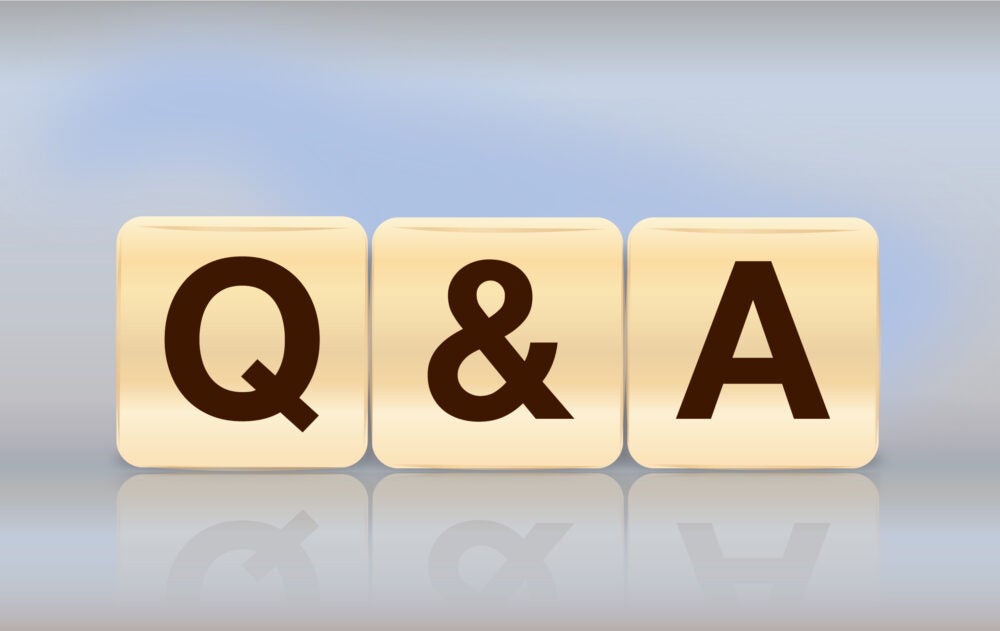Environmental Cleaning and Disinfection: Answers to Frequently Asked Questions
I often present in multiple forums on environmental cleaning and disinfection in healthcare spaces. Most recently, I had the pleasure of speaking at the APIC 2021 Cleaning, Disinfection, and Sterilization (CDS) conference. My talk was titled “The Next Normal for Cleaning & Disinfection in a Post-Pandemic World.” The session, along with others, was recorded and can be accessed here. This blog shares the questions and answers to some of the more common questions that I receive in the course of my work. Let’s get to it:

Question 1: Can you describe the pros and cons of ATP testing?
Answer:
| Pros | Cons | |
|---|---|---|
| Adenosine Triphosphate (ATP) |
|
|
| Fluorescent marker and black light |
|
|
As ATP and fluorescent markers measure different aspects of the cleaning process, I suggest using a combination of both.
Question 2: Are you aware of any certifications for healthcare cleaning professionals?
Answer:
- The Association for the Healthcare Environment (AHE) offers several, most notable is their Certified Health Care Environmental Services Professional (CHESP). Their newest certification offering is the Certificate in Non-Acute Care Cleaning (CNAAC).
- The Ohio State University (OSU) also has 2 offerings:
- Infection Prevention 101 — this is a free online self-paced course that offers a certificate of completion. Click here to go to the course.
- The second is an online academic undergraduate certificate in healthcare environmental services within the hospitality management program. Click here to learn more about this course.
Question 3: For environmental and high-touch surfaces is it generally acceptable to use a disinfectant wipe for the cleaning step followed with a new wipe for disinfection?
Answer:
It depends. If your product is a 1-step cleaner-disinfectant and the surface is not visibly soiled or the pathogen of concern is not Clostridioides difficile (“C. diff”) or Candida auris, then one wipe can be used to clean and disinfect at the same time. Now if the surface is visibly soiled or C. diff or C. auris are involved, regardless of whether your product is a 1-step or 2-step product, cleaning and disinfection need to be completed in separate steps — and you definitely want to use a new wipe for the second (disinfection) step.
Question 4: Some IFUs for medical devices and equipment state “moist cloth,” but do not state a particular agent. How do you disinfect them?
Answer:
It is a regulatory requirement to follow the manufacturers cleaning and disinfection IFUs. With that said, if the IFUs are not clear or seem inappropriate — for example, a device that comes into contact with a patient skin but the IFUs say clean only with soap and water — there are two actions that can be taken. First, reach out to the manufacturer for clarity. If not provided or still seems inappropriate, submit an FDA Med Watch report. The FDA does not know what they don’t know unless we report these concerns.
Question 5: Can you briefly talk about low-level disinfection versus intermediate-level disinfection?
Answer:
Low-level disinfection is appropriate for the vast majority of your environmental disinfection needs. Intermediate-level disinfection was also required to comply with OSHA’s bloodborne pathogen standard when it was issued in 1992. However, low-level disinfection using products with HIV/HBV claims also comply with the standard.
Question 6: What is the typical contact time for electrostatic disinfection?
Answer:
It depends on the chemistry (disinfectant) being used — be sure to follow the product IFUs for contact time. Now application of the disinfectant by way of electrostatic application is very fast — an entire patient room can be sprayed in a 1–2 minutes depending on the room size.
Question 7: Does electrostatic disinfection technology replace the manual “elbow grease” cleaning?
Answer:
Electrostatics are primarily an adjunct, however, they can be used to disinfect surfaces that are not visibly soiled in between routine cleaning. This Donskey study showed significant reduction in C. diff spores on wheelchairs without a manual cleaning step. Here is one way I think about it, using the wheelchairs again; if these items are getting a thorough cleaning say daily AND they are not visibly soiled, you could spray them between uses using an electrostatic sprayer- I guarantee that it is more disinfection than they would get otherwise in the course of a day. Another example, OR walls can be spot cleaned and then the entire surface disinfected with the electrostatic device – consider the time savings! Regarding the need to clean first. This depends on 2 key things: 1) is the product a one-step cleaner-disinfectant (so many are these days) or is it a 2-step product, and 2) is the surface visibly soiled or is C. diff or C. auris involved? If the surface is not visibly soiled and you have a 1-step cleaner-disinfectant, then a pre-cleaning step is not required. You also have to follow the IFUs — if it says a pre-cleaning step is required, then you must do so. See the EPA’s 6 steps for safe and effective disinfectant use. Even they say pre-clean if the directions mention pre-cleaning or if the surface is visibly soiled.
Question 8: Are there any alternatives to using microfiber with quaternary ammonium compounds (“quats”)?
Answer:
Alternatives to using microfiber would be to use a disposable ready-to-use disinfectant wipe. Also, electrostatic application of disinfectant does not have the quat binding issue as no manual wiping required.
I hope you found this Q&A helpful. Keep those questions coming — you can find me on Twitter or LinkedIn. You can also learn more in our Resource and Education Center.
References:
1. Rutala, W. (2019, Aug). Best Practices in Disinfection of Noncritical Surfaces in the Healthcare Setting: A Bundle Approach [PowerPoint Slides]. AHE Exchange Conference.






